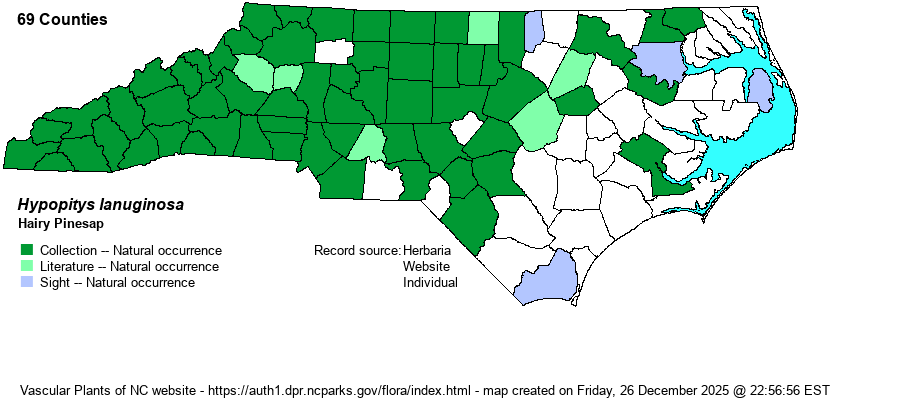| taxonName | relationship | relatedTaxonName | relatedTaxonRefText | relComments |
|---|
|
|
|
| Hypopitys lanuginosa | < | Hypopitys monotropa | Flora of Virginia | , misapplied to North American plants |
| Hypopitys lanuginosa | < | Monotropa hypopithys | Gleason and Cronquist (1991) | , misapplied to North American plants |
| Hypopitys lanuginosa | < | Monotropa hypopithys | Fernald (1950) | , misapplied to North American plants |
| Hypopitys lanuginosa | < | Monotropa hypopithys | Flora of North America (1993b, 1997, 2000, 2002a, 2002b, 2003a, 2004b, 2005, 2006a, 2006b, 2006c, 2007a, 2009, 2010) | , misapplied to North American plants |
| Hypopitys lanuginosa | < | Monotropa hypopithys | Gleason (1952) | , misapplied to North American plants |
| Hypopitys lanuginosa | < | Monotropa hypopithys | | , misapplied to North American plants |
| Hypopitys lanuginosa | < | Monotropa hypopithys | | , misapplied to North American plants |
| Hypopitys lanuginosa | < | Monotropa hypopithys | Radford, Ahles, and Bell (1968) | , misapplied to North American plants |
| Hypopitys lanuginosa | < | Monotropa hypopithys | | , misapplied to North American plants |
| Hypopitys lanuginosa | < | Monotropa hypopithys | Wofford (1989) | , misapplied to North American plants |
| Hypopitys lanuginosa | < | Monotropa hypopithys | Wunderlin & Hansen Flora of Florida (3) | , misapplied to North American plants |
| Hypopitys lanuginosa | < | Monotropa hypopithys | Flora of West Virginia | , misapplied to North American plants |
| Hypopitys lanuginosa | < | Monotropa hypopithys | Stevens et al. in Kubitzki (2004). | , misapplied to North American plants |
| Hypopitys lanuginosa | >< | Hypopitys americana | Small (1933, 1938) | , misapplied |
| Hypopitys lanuginosa | > | Hypopitys insignata | | |
| Hypopitys lanuginosa | = | Monotropa lanuginosa | | |
| Source: Weakley's Flora |

